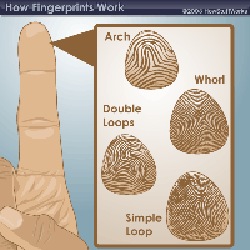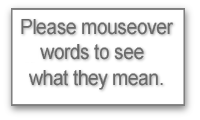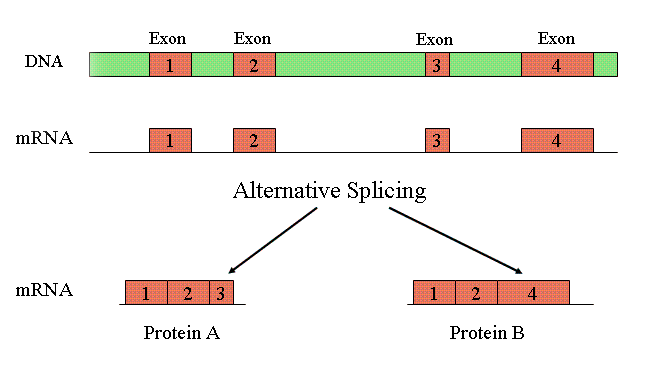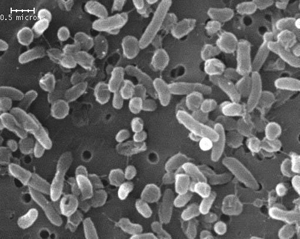Science news in brief
26-June-2009
The week in Real Science

The research below, chosen from hundreds of recently published papers, ranges from fingerprints to dinosaurs, from chicken feathers to ice-sheets. Take a look:
12 June 2009 Fingerprints not for gripping
Fingerprints mark us out as individuals and leave telltale signs of our presence on every object we touch. But what are they for? Improving our grip, it is often assumed. Now researchers at the University of Manchester have shown that the grip would be better if we had no fingerprints.
12 June 2009 Billion-year life extension
As radiation from the sun steadily increases, our planet will grow warmer, the oceans will evaporate and all life on Earth will disappear. This will take about a billion years, scientists thought. But Caltech researchers have now come up with a mechanism that doubles that estimate - and incidentally increases the chance that advanced life will be found elsewhere in the universe.
14 June 2009 Tiny frozen microbe
Bacteria trapped two miles under Greenland ice for 120, 000 years have been coaxed back to life. They may offer clues to kinds of life on other planets.
21 June 2009 Ice sheets retreat in a geologic instant
Greenland and Antarctic glaciers could shrink faster than expected, say paleoclimatologists who have been studying a prehistoric glacier in the Canadian Arctic. It retreated, they have discovered, in just a few hundred years
22 June 2009 Midget plant gets makeover
A tiny plant with a big name helps researchers design new crops to help meet increasing demands for food, biofuels, industrial materials and new medicines. The genes, proteins, and other traits of this plant reside in the Arabidopsis Information Resource (TAIR) database. TAIR just released a new version of the genome sequence, which includes an array of improvements and novel features that promise to accelerate this critical research.

21 June 2009 Dinosaurs shrinking
The largest animals ever to have walked on earth might not have been as massive as previously thought, reveals a paper published today in the Zoological Society of London's Journal of Zoology. Scientists have discovered that the original statistical model used to calculate dinosaur mass is flawed.
For instance the 38-tonnes estimate for the mass of Apatosaurus louisae, one of the largest dinosaurs, could be more than double its actual mass (18 tonnes).
23 June 2009
Feather fibers fluff up hydrogen storage
Scientists say they have developed a new hydrogen storage method — carbonized chicken feather fibres — that can hold vast amounts of hydrogen, a promising fuel source, but hard to handle. And they can do it at far lower cost than other hydrogen storage systems, they say.
Education resources, classroom activities, cool stuff
Alternative splicing and arabidopsis
Professor John Brown on alternative splicing
A high school plant research project.
Transcribe and translate a gene
Arabidopsis experiments in school
A tiny frozen microbe
Transcript of 26 June 2009 podcast
Plant life
Isn't it strange how you can go through your whole life never hearing of a word, a person or a thing, then, as soon as you hear it once, it pops up all over the place? Happened to me this week with a little weed called Arabidopsis thaliana.
Actually it's only popped up twice so far – once on paper in the press releases on science I get from all over the world, and once in person from a scientist called John Brown, whom I visited at the Scottish Crop Research Institute just outside Dundee. But that's twice more than in my whole life before.
I'd gone to talk to Professor Brown about alternative splicing, which again is something I hadn't heard of until recently. I say talk but listen would be a better word as he did the talking and I did my best to follow him. genes can get complicated for a simple physicist.
Getting it wrong
I recorded our chat, with his permission, because it was brought home to me early in my career as a journalist that I couldn't take accurate notes and talk to people at the same time. After I'd spoken on the telephone to a scientist at St Andrews University, an expert on ape intelligence, and wrote up his work for the Scotsman newspaper, I got a gently critical call from him.
It was a well-written piece, he told me, before pointing out three major mistakes I'd made, including confusing baboons with bonobos – something you don't want to do incidentally if you are a bonobo, since they have sex with nearby bonobos every chance they get, which would no doubt annoy a nearby baboon.
"I assumed you'd be recording our conversation," Andrew Whiten concluded. "So you could get it right."
As I say, gentle but critical. And with good reason. I'd had no journalistic training and recording conversations simply hadn't occurred to me. But from then on I recorded everything I was allowed to, whether face to face or on the telephone.
So I can now let you hear a little of what John Brown told me about Arabidopsis thaliana and alternative splicing.
Splice is nice
First let me set the scene and explain briefly what it's all about. If we splice things together – ropes, pieces of wood, film, tape – what we do is join the ends in some way. Now suppose you have several pieces of rope all different, let's call them 1, 2, 3 and 4, lying on the ground in that order.
1 2 3 4
We can easily splice these together in a number of different ways, for example
1 2 3 or 1 2 4 or 2 3
And so on.
These are some of the alternatives that are meant by alternative splicing. But instead of rope it refers to genes.
Smart or what?
Incidentally some people might object to this use of the word alternative, which comes from the Latin alter, meaning the other of two. They would say that alternative should be used only when you're talking about two possibilities, not three or more.
There are two good alternatives in reply to these people. One is to point out that there's no other word that will do the job and that common usage and the Oxford English Dictionary now both agree that alternatives can refer to more than two possibilities. The other is to say "Bog off – this is English not Latin."
I'm all for correct usage. But forcing people to follow rules from a dead language is one-upmanship, not communication.
Short of genes
Anyway back to alternative splicing. Living things are made of proteins. A gene is a blueprint for a protein. So it used to be thought that one gene made one protein.
But humans have fewer than 25,000 genes, we learned from the human genome project. This was a huge surprise for two reasons.
First the human body contains upwards of 100,000 proteins, so how do they all get made from less than 25,000 genes? Second that small number of genes means that loads of living things – many of them pretty primitive, such as coral, microscopic worms and sea urchins – have as many genes as humans. Plenty of organisms have more genes. Rice, for instance, has about twice as many genes as we do.
On the one gene gives you one protein model, simple living things like worms should need fewer genes than complex ones like humans, and there's no way to get 100,000 proteins from 20,000 genes. So what's going on?
Alternative splicing. That's what. And what exactly is that?
More words
Well I'll tell you. First a tiny bit of terminology: A gene gets expressed when it produces a protein. This happens in the cells of our bodies in two steps. First a stretch of DNA in the nucleus of the cell produces a matching stretch of another type of molecule called mRNA.
DNA is a stay-at-home sort of molecule. But m is short for messenger. So mRNA is a traveller – a travelling blueprint – which waves goodbye to the DNA that made it and heads off, out of the nucleus into the body of the cell. There in the second step it produces a protein, again by matching molecules along its length.
The first step, DNA to mRNA is called transcription. The second step, mRNA to protein is called translation.
Ins and outs
But this still sounds very much like one gene gives you one protein. Where do the alternatives come in? Well, take a look at the diagram at the top of the page. Remember splicing together our bits of rope, numbered 1, 2, 3 and 4? Well now we're splicing together bits of gene, coloured red in the picture, which are separated from each other by stretches of DNA, coloured green, that aren't parts of the gene. All DNA is not genes.
Another wee bit of jargon: The parts coloured green are called introns, which is short for intragenic regions. They're bits of DNA that lie between bits of genes. We used to think they didn't do anything, but we're slowly learning about the many jobs they do in the cells. What they don't do is get expressed. So they're not bits of genes.
The parts coloured red are bits of genes. They are called exons, which is short for expressed regions.
Splicing machines
Now we can go back to what we said about a stretch of DNA in the nucleus producing a matching stretch of mRNA. Actually it produces a matching stretch of RNA that isn't quite the final mRNA, because there's another step before that.
In this step the introns get cut out and the exons get spliced together to make the final mRNA. And just like the bits of rope, all the exons can be spliced together 1, 2, 3, 4, or some of the exons can be missed out to get 1, 2, 3 or 1, 2, 4 or 2, 3, 4, and so on.
Each of these splicings – alternative splicings – in the mRNA will produce a different protein, when it has done its travelling and gets translated.
"As we sit here talking, there are 20,000 splicings going on in every cell in our body," Professor Brown said to me. "And we have a trillion cells in our bodies. That's an awful lot of splicing."
Handy plant
And what about the little weed Arabidopsis? Well this was the first plant that had its genome sequenced, and it's a handy little character to do experiments on. To a plant geneticist it's the equivalent of the fruit fly or the nematode worm C elegans to an animal geneticist. Professor Brown and many of his colleagues explore the complex world of genes and how they work using the little weed.
We don't eat it, decorate our gardens with it or grow it in the fields but little Arabidopsis thaliana has become one of the most important plants in the world.
Have a listen to my chat with Professor Brown, and if this is the first time you've heard of alternative splicing I bet it won't be long until you hear of it again.
That's all for this week at Real Science. Keep thinking.
And keep splicing.
More help with words
atom, cell, complex, conception, DNA, element, fertilisation, inherit, membrane, molecule, protoplasm, tissue



